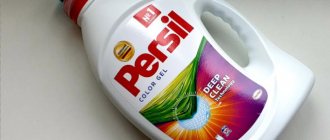The best and agrotechnically correct solution is to carry out all the necessary work to prepare and clean a polycarbonate greenhouse in the fall. But if for some reason this was not possible, we plan all the work for the spring. Processing a polycarbonate greenhouse is an important point; the quality and quantity of the harvest depends on it. Polycarbonate greenhouses are susceptible to infection by fungal diseases, spider mites and late blight. At the same time, a separate control method is provided for each pest or disease.
Here you will learn:
The importance of greenhouse care in autumn
It is impossible to refuse to clean the greenhouse or ignore the recommendations of experienced farmers on caring for the greenhouse structure, since in the future you may encounter many unpleasant consequences that develop into real problems:
- if you refuse to carry out general cleaning of the interior of the greenhouse, there is a risk of mold formation;
- During the season, a large number of toxins and pathogens accumulate on the walls, capable of attacking young shoots of vegetable crops in the spring, infecting them (weak, diseased plants will not be able to produce a good harvest);
- the soil is a haven for pathogenic microorganisms, in the fall it is possible to organize their effective elimination by treating the soil with the help of special preparations;
- In the absence of human attention and proper care, the structure of the greenhouse may be subject to rotting, rusting, and in the future, as a result of inaction, the greenhouse may collapse;
- In greenhouse conditions, many types of fungi can develop, which have a negative effect on living organisms, including causing health problems in humans.
How to care for a greenhouse in autumn
In the summer, when the crops ripen, the greenhouse does not require special care.
Occasionally you can water the walls with a hose, washing off the dust. It is also recommended to ventilate it. The main maintenance work on the structure occurs in the fall. In the fall, summer residents harvest from their gardens, including greenhouses. For the winter, the greenhouse must be removed and completely closed until the next planting season.
Proper care of a greenhouse in the fall includes:
Cleaning up plants after harvest. All tops, leaves, and weeds should be removed from the ground. Remove all fertilizers and soil cultivation tools. Soil treatment. The soil in the greenhouse is treated with special bactericidal preparations or watered with boiling water. It is recommended to remove a layer of 5-7 cm of old soil, replacing it with new one. Fertilizing the soil. The quality of the soil under a greenhouse can be improved if you sow it with green manure in the winter - peas, rapeseed, mustard. You can add humus and various mineral fertilizers to the soil. Disinfection. The carbonate coating of the greenhouse should be washed with dishwashing detergent. This prevents the proliferation of harmful fungal microorganisms and extends the life of the structure.
It is very important to clean all joints and crevices; for this you can use a soft cloth and a spray bottle. As a disinfectant, you should choose only those that are approved for polycarbonate coatings. Conservation
After all cleaning work, you need to ventilate and dry the room, then check all latches and locks.
Checkers are used as disinfection, which release sulfur gas when burned. To get rid of the smell, the greenhouse must be left open for several days.
Among the means of disinfection, one can highlight a folk method, which consists of using a decoction of pine branches. Pour boiling water over ½ bucket of needles, let it steep for 30-40 minutes, after which it can be used as a disinfectant. This disinfection method can be used in spring and summer to treat the walls and roof of a greenhouse.
Autumn work
After the end of the hot season - harvesting, work must be carried out aimed at preparing for winter, including:
- removal of tops and other organic matter;
- digging;
- soil cultivation;
- disinfection measures;
- repair and strengthening of the structure;
- insulation.
The cleaning process and the procedure for carrying out disinfection procedures should not be based on one’s own discretion, but strictly following the established requirements.
Treating a greenhouse in the fall against pests and diseases: how and how to disinfect it
Cleaning
After harvesting, you first need to empty the greenhouse of all unnecessary things. Inside there may be a variety of summer resident tools:
- shovels;
- rake;
- supports;
- twines;
- pegs;
- other.
After this, attention is refocused on the ground. It is important to remove:
- all the tops;
- plant roots;
- weeds;
- fallen leaves.
If there are no signs of infection on them, organic residues can not be thrown away, but placed in a compost pit. In a few years they will become an excellent basis for feeding plants.
If there are traces of fungal infection or other diseases on the tops or fallen leaves, the organic matter is burned to prevent infection of other plants.
Cleaning the greenhouse
It is strongly recommended to wash the structure and walls of the greenhouse in the fall, because:
- at this time, summer residents have more free time at their disposal than in the spring, so all work will be carried out without undue haste;
- wet cleaning involves the use of chemicals, which during the winter period, even if they get into the soil, will have time to decompose, which is very important for plants.
Wet cleaning involves two stages:
- During the first stage, the external and internal surfaces of the walls and the frame of the greenhouse are thoroughly washed using water and detergents.
- The second stage involves washing. The surfaces of the walls and frame are rinsed twice with clean water to completely remove any remaining detergent.
Wondering what to wash the greenhouse structure with and what products are best to use, experienced summer residents suggest choosing one of the acceptable options:
- Many people prefer to use laundry soap as a detergent (a third of the bar is grated and diluted in 10 liters of warm water);
- If wet cleaning with home remedies does not inspire confidence among summer residents, you can purchase ready-made mixtures in specialized stores that allow you to not only clean surfaces, but also disinfect them.
It is strictly forbidden to replace laundry soap with dishwashing detergents. They contain a large amount of surfactants that can cause serious problems.
There is another option for washing the walls and structure of the greenhouse inside and out. In this case, it is important to have a steam generator available. This household appliance creates hot steam, which is used to treat all surfaces.
If you decide to treat the surfaces with a steam generator, you need to prepare two brushes:
- soft for cleaning walls;
- slotted for processing the frame.
After completing wet cleaning, the interior of the greenhouse must be dried. High humidity can act as a provocateur for fungi or rotting. Drying is especially important for greenhouses whose frame is made of wood.
What to do if the greenhouse turns green
It is very difficult to remove greens from inside the honeycomb, so it is better to take measures to prevent them from appearing.
Preventive action
First of all, it is important to install the greenhouse correctly: you should not build it on a wooden foundation, as the wood will quickly begin to rot from high humidity and may become moldy. A foundation made of painted metal pipes or, for serious owners, a brick foundation is suitable. Along the bottom edge, you need to seal the honeycombs with adhesive-sealant, seal them with tape or glue a special protective punched tape onto the polycarbonate cut: it acts on the principle of a membrane - it does not allow moisture to pass through from the outside and releases condensation from the inside.
The edges of cellular polycarbonate can be treated with sealant or tape
Before planting the first plants, the greenhouse is disinfected with a solution of pine or spruce needles (half a bucket) and a bucket of hot water. This solution is sprayed on the surfaces, frame, joints and lower edges of polycarbonate located close to the ground.
Disinfection
Having figured out the question of what is the best way to wash a polycarbonate greenhouse outside and inside in the fall, it is useful to study the step-by-step guide, familiarize yourself with the recommendations for disinfection and choosing the optimal products.
Treatment of a greenhouse in the fall against late blight
Disinfection can be carried out in one of the following ways:
- fumigation;
- spraying;
- chemical treatment.
Fumigation
The fumigation procedure involves the use of cuttings of sulfur or sulfur bombs. Initially, all the main structures of the greenhouse need to be moistened, and then proceed to fumigation. The sequence of further actions differs slightly depending on the choice of material with which the fumigation will be carried out.
If cutting sulfur is used, the algorithm of actions will be as follows:
- Cutting sulfur is taken at the rate of 1 kg per 10 cm 3 room.
- The sulfur is crushed and mixed with charcoal.
- The resulting mixture is poured in a thin layer onto metal baking sheets.
- The baking sheets are placed in deep basins into which water has already been poured.
- The prepared containers are placed inside the greenhouse.
- The sulfur is set on fire.
It is important to remember that during combustion, sulfur dioxide is released into the air, which poses a danger to human health. For this reason, the procedure must be carried out wearing protective glasses, gloves and a gas mask.
The fumigation procedure using sulfur bombs against diseases and pests comes down to laying out the prepared material on baking sheets, which are previously placed in different places in the greenhouse. After this, the sulfur bombs are set on fire.
Spraying
Some summer residents consider spraying as an alternative way to disinfect a greenhouse.
This procedure involves using:
- Bordeaux mixture;
- other means intended to destroy harmful insects and fungi, including whiteflies and late blight.
The products are diluted according to the manufacturer's recommendations. The prepared solution is sprayed over all surfaces of the greenhouse using a spray bottle.
Treatment with chemicals
You can treat the greenhouse using a variety of chemicals, including:
- copper sulfate;
- bleaching powder;
- potassium permanganate solution.
However, in most cases, chemical treatment is part of the work to prepare the soil for the next season, since the chemicals are applied directly to the soil.
Why treat a greenhouse in the spring
While the greenhouse is new (1-2 years), the topic of its treatment is not so relevant, but over the years, pathogenic microorganisms accumulate not only in the soil, they can colonize structural elements. Larvae, eggs, and pupae of harmful insects overwinter well in protected soil conditions and in the spring they can cause significant damage to young plantings.
Seasonal temperature fluctuations, wind, and rain have mechanical effects on the covering material, foundation and load-bearing structures of the structure. In the spring, it is necessary to carry out an external and internal inspection of the greenhouse to identify mechanical defects and eliminate them.
During the season, greenhouse plants remove many nutrients from the soil. Proper spring soil preparation is the main task of the owner of a polycarbonate greenhouse. Plan for spring work in the greenhouse:
- elimination of mechanical damage to the structure;
- disinfection of the coating and load-bearing elements of the greenhouse;
- destruction of harmful microflora in the soil;
- restoration of soil fertility.
A large selection of preparations allows for high-quality spring treatment of polycarbonate greenhouses. In this case, it is important not only to choose a modern remedy for plant diseases, but also to carry out all the necessary work in the right time.
Soil preparation
Some of the work involved in preparing the soil for next season may have already been done, since it involves removing any remaining organic matter. Summer residents perform these actions during general cleaning of the greenhouse.
However, this procedure is not limited to just harvesting the remaining plant roots. Next you need to do the following:
- replace the depleted top layer of soil (about 5cm);
- treat the soil with bactericidal agents or scald with boiling water.
It is better to avoid fertilizing in the fall. It is useful to hold such events in the spring. With the onset of winter, in the event of snowfall, experienced summer residents recommend periodically scattering snow over the entire ground surface in the greenhouse. This will allow:
- provide reliable protection of the soil from severe frosts;
- additionally moisten the soil as a result of melting snow with the onset of a warm period.
Soil preparation
The greenhouse creates ideal conditions not only for the growth of plants (including weeds), but also for various pests that can ruin the standing crop if they are not dealt with. Treatment of the greenhouse in the fall against pests and diseases should be comprehensive. The use of chemicals - various insecticides during the growing season is not a very good idea. Chemicals that accumulate in plants eventually enter our bodies.
Therefore, special attention should be paid to disinfection and other soil treatment in the greenhouse in the fall.
Soil replacement
This is a rather labor-intensive and expensive process, but after it the number of pests is reduced by several orders of magnitude. It is recommended to carry out such a procedure as preparing the soil in a greenhouse in the fall, with a complete replacement of the fertile layer, at least once every three years. The soil is removed to a depth of 7-10 cm. Then peat, humus (manure), sand and ash are added in its place, the proportions vary depending on the presence of a particular ingredient, but rarely exceed 1 bucket per 1 m2 of soil. Tilling the soil in a greenhouse in the fall may include fluffing, for heavy and oily soils, using sawdust. However, with this method you need to be careful and, if possible, not use sawdust from coniferous wood (spruce, pine, larch) and wood species with a large amount of tannins (oak, walnut).
The resulting mixture is dug up. Distribute evenly over planting areas and cover with a thick layer of straw or fallen leaves on top. After snow falls in winter, you need to throw some of it into the greenhouse yourself with a shovel (a layer of 15-20 cm) to prevent deep freezing of the soil and provide the ground with the necessary moisture in the spring. Some gardeners additionally water the enriched soil mixture with a weak solution of potassium permanganate before adding fertilizers.
A thick layer of fallen leaves will help keep you warm
Soil infected with pests and diseases does not need to be thrown away, but rather treated. How to treat the soil in a greenhouse in the fall in order to effectively disinfect it without resorting to strong chemicals. To do this, a pile is formed with an area of 1-2 m2 and a layer thickness of 20 cm. When constructing it, each layer is generously sprinkled with lime at the rate of 250 g per 1 m2. It remains in this state for the entire next year, having frozen out over the winter, the pile will need to be dug up again next fall and used after the second winter.
Soil fertilization
How to fertilize the soil in a greenhouse in the fall depends not only on the type of soil, but also what crops are planned to be planted in the spring. To achieve the highest yield, not only special means are used, but also special methods for processing perennial plants:
- Strawberry. After the last harvest, at the end of August, all the greens are mowed down so that the top buds remain intact. The bed is watered abundantly and the soil is loosened. Potash and superphosphate fertilizers are applied in the proportions recommended by the manufacturer. All this is sprinkled with a small layer of fertile soil so that the new shoots do not dry out. Before the onset of cold weather, no later than October, the strawberry roots are earthed up and covered with peat. In winter, be sure to pretend to be a thick layer of snow to prevent freezing.
- Tomatoes. One of the most common greenhouse crops. They are very demanding on the quality of the soil and the composition of fertilizers. For tomatoes, soil preparation in a greenhouse in the fall consists of applying organic, chemical or combined fertilizers, which must necessarily contain:
- Manganese – promotes faster ripening of fruits;
- Copper, boron – stimulate flowering and abundant fruiting;
- Potassium, magnesium, phosphorus, nitrogen - contribute to the rapid growth of the plant.
- Cucumbers. The most common “resident” of greenhouses. There are many varieties designed for growing in greenhouses. However, processing a polycarbonate greenhouse in the fall to plant cucumbers in it has its own specifics. First of all, you need to check the acidity of the soil. If the acidity is more than 6.5-7 pH in the fall, it is necessary to lim the soil. Also in the fall, the soil is fertilized with the following specialized mixture:
- Potassium salt – 10-25 g;
- Ammonium sulfate – 10-25g;
- Ammonium nitrate up to 25 g.
Important! There is a very simple way to test soil acidity at home. You need to pour a handful of dry soil with simple 9% table vinegar
If a reaction begins with the release of gas, then there is enough lime in the soil and it is neutral.
Determination of soil acidity using 9% vinegar, reaction to neutral soil
Greenhouse frame repair
Before the onset of winter, it is useful to carry out repair work to repair structural damage.
During operation, it is not the polycarbonate that suffers the most, but the frame of the greenhouse:
- the metal profile is subject to rusting;
- Wooden structures are subject to rotting due to high humidity.
Accordingly, when carrying out repair work you need to:
- clean metal elements from rust and paint;
- wooden structures that have already rotted should definitely be replaced.
It is important to prevent destruction or damage to the greenhouse during the winter. Such dangers await her when there is a lot of snow in winter. To ensure that the structure can withstand increased loads, it is recommended to build and install supports, as in the video.
Source
Where does the greenery inside the polycarbonate honeycomb come from?
Cellular polycarbonate is a material consisting of several layers in which there are long longitudinal channels, or stiffening ribs, called honeycombs. These honeycombs contain air, due to which the weight of the material is reduced, and thermal conductivity and insulating properties are improved. However, sometimes, if the greenhouse is installed incorrectly, condensation accumulates in the honeycombs and a green coating forms - mossy mold. The reasons for its appearance are the same as for black mold - poor ventilation and high humidity. In addition to infecting the soil and plants, plaque reduces the light transmission of polycarbonate (the walls become opaque due to greenery), which again contributes to the appearance of various types of mold.
Green coating on polycarbonate appears inside honeycombs
Another option for the further occurrence of such a green coating on the walls may be the lack of a foundation under the greenhouse.
Strashnov
https://7dach.ru/user_644/stenki-polikarbonatnoy-teplicy-pokrylis-zelenym-naletom-chem-mozhno-ego-udalit-151374.html
How to wash a polycarbonate greenhouse. If protozoan algae have settled on polycarbonate
In my oldest greenhouse, the simplest algae have settled on the polycarbonate, which is why by autumn the polycarbonate turns green to a height of a meter.
Also, greenery is visible on the frame: racks and cross members. Apparently these are the most favorable places for algae.
It is imperative to get rid of them in the fall: remove their colonies for the winter, otherwise, in the spring they will vigorously become active and, God forbid, penetrate inside the polycarbonate cells and then you can only throw it away.
If your polycarbonate is not as transparent as it used to be, then this may be your case.
If there were any lesions on the crops grown in the greenhouse (blight rot, late blight), then even more so, you need to thoroughly wash the entire frame and every centimeter of polycarbonate inside the greenhouse, since the spores on them can easily overwinter.
The easiest and most reliable way to wash surfaces is to do it the old way: hands + rag + bucket with water and laundry soap.
In a bucket you can dilute not only laundry soap, but also tar soap, especially since their liquid analogues are on sale.
And also, it is not forbidden to add such proven antiseptics as potassium permanganate and hydrogen peroxide to the washing water.
All these substances will not in any way affect the quality of the polycarbonate coating or the metal frame, unlike sulfur bombs, for example, which cause metal corrosion.
And they are completely safe for humans and the soil of garden beds.
If you liked the article, put a LIKE and subscribe to the channel to read new posts.
Source
What is black mold and why is it dangerous?
Black mold is a species of higher mold fungi, Aspergillus nigra, from the genus Aspergillus. It looks like black, irregularly shaped spots. Fungal spores can remain dormant for several years and begin to multiply in a humid and warm microclimate. Cellular polycarbonate, which transmits sunlight and quickly dries, does not often become moldy, and if stains appear on the walls of such a greenhouse, it means that the degree of damage is severe.
Black mold appears as dark, irregularly shaped spots that merge into each other.
Most often, the fungus begins to multiply in difficult to ventilate areas of the greenhouse:
- corners between walls or between a wall and the floor;
Most often, black mold appears where air does not reach when ventilating the greenhouse - in corners and joints
Any mold is not only an unaesthetic appearance of the greenhouse. It is dangerous both for plants and for people working in the greenhouse. The fungus that gets on the plantings causes various diseases, they grow worse. The fruits deteriorate - they can no longer be eaten or used in preparations. And when inhaling mold spores spreading in an enclosed greenhouse, a gardener may develop a cough - even bronchitis and asthma, skin allergies or a runny nose.
The design of the greenhouse itself, of course, will not become unusable due to mold, but... if there are wooden objects in it, they will begin to rot.
Step-by-step instructions on how and how to treat a polycarbonate greenhouse in the fall
The popularity of polycarbonate greenhouses is due to the ease of installation and the ability to obtain a rich harvest. At the same time, many experts pay attention to the fragility of these products, which often manifests itself mainly with the onset of the first cold weather.
Work related to preparing a greenhouse for the winter must be carried out correctly. That is why many owners often have questions about how to wash the inside of a polycarbonate greenhouse in the fall.
Autumn treatment of a polycarbonate greenhouse: cleaning, washing, disinfection
A set of measures to prepare a polycarbonate greenhouse for winter includes cleaning, general cleaning, disinfection measures, repair work, soil treatment, strengthening the greenhouse, insulation, etc.
All this must be carried out in accordance with the current rules, which have been developed over a long time by many specialists.
Why is it important to treat the greenhouse in the fall?
The need to treat polycarbonate greenhouses in the fall is due to factors such as:
- If cleaning is not done, there is a risk of mold growth.
- Without the use of special preparations, pathogenic microorganisms can multiply in the soil.
- Various diseases often appear on vegetables grown in a greenhouse.
- Violation of sulfur regulations damages the soil.
- Structures, if no additional action is taken, gradually rot.
- Molds, including black rot, can worsen the indoor microclimate.
- Often in warm climates, various fungi quickly develop and can have a toxic effect not only on plants, but also on humans.
Thus, you should not neglect all the recommendations regarding the treatment of polycarbonate greenhouses in the fall.
In this case, the process of cleaning and treating all surfaces must occur in accordance with certain rules. They must not be violated, as this will reduce the efficiency of the work performed.
Cleaning
The process of general cleaning of a polycarbonate greenhouse in the fall consists of the following steps:
- Initially, all remaining tools are collected. This applies to shovels, rakes, twines, stakes, supports and many other products.
- Next, the soil is cleaned of all plant elements that remain in it or on it. After this, the top few centimeters of soil must be removed.
Cleaning is not the most difficult and time-consuming preparation process. This is due to the fact that it is carried out gradually throughout the autumn period.
How and how to wash a polycarbonate greenhouse
After cleaning, you need to thoroughly rinse all elements of the polycarbonate greenhouse.
To do this, just warm water along with a piece of rags or a sponge is enough.
To do this, you should select a special laundry soap.
If green algae appears on the surface of the greenhouse, you will need a brush and professional cleaning agents to remove it.
In this case, it is prohibited to use scrapers or abrasive substances.
After this, you should lower down smoothly. This way you won’t be able to miss a single element of the greenhouse.
After work, you must carefully inspect the entire surface.
If at least one unwashed element remains on it, there is a risk that pathogenic microorganisms, as soon as warm days begin, will quickly multiply and then damage the plants.
Effective disinfectants
The disinfection process in a greenhouse is a set of specific actions aimed at destroying pathogenic and disease-causing organisms in the room.
This must be done so that the next season of growing plants goes as easily as possible and without any problems affecting the yield.
Fumigation
In addition to directly washing the greenhouse, it is also necessary to fumigate it. For this, either cutting sulfur or sulfur blocks are used.
Before starting work, it is recommended to completely close the greenhouse and wet its main structures with water.
The fumigation process using cutting sulfur occurs as follows:
- First you need to prepare the material. It is recommended to use 1 kilogram of the substance per 10 cubic meters of room.
- The sulfur should be crushed well and mixed with charcoal until a homogeneous mass is formed.
- The mixture should be scattered on metal baking sheets, which must be placed in a deep basin, filling the latter half with water.
- At the end, the containers need to be placed around the room, setting fire to the sulfur, during which sulfur dioxide will be released into the air. It is toxic and dangerous to humans, therefore, according to the rules, it is necessary to use a gas mask, safety glasses and gloves.
The process of fumigation using sulfur bombs occurs according to the following algorithm of actions:
- Initially, you should prepare 60 grams of material.
- All checkers should be placed on baking sheets, which should be placed throughout the room.
- At the end it is necessary to set fire to the sulfur.
It is worth noting that many gardeners do not approve of the use of sulfur bombs. This is due to the fact that sulfuric anhydride has a bad effect on metal. That is why, if the frame is damaged, it is better to give preference to other methods.
Spraying
Fumigation is one of the most common ways to treat a greenhouse for the winter in order to disinfect it.
Despite this, there are many other methods that are no less effective.
Many gardeners spray the greenhouse in the fall, using Bordeaux mixture or products designed to combat fungus and insects.
To do this, these substances must be correctly prepared in accordance with the instructions for use.
After this, using a regular spray bottle, you need to evenly cover all surfaces of the room with the resulting liquid.
How to wash a greenhouse correctly
Mix a few drops of soap with a bucket of water. Use a soft sponge to gently wash the inside of the polycarbonate sheets to remove any accumulated dirt. Rinse the walls with a hose and blot with a soft towel to avoid water marks.
It is necessary to avoid possible particles of sand and dust getting on the sponge; they can scratch the surface of the sheet. Why is it important not to use abrasive sponges, solvents, etc.? High-quality sheets of cellular polycarbonate are coated with a UV protective layer, which provides protection for the sheets when exposed to sunlight. Abrasives can damage the layer, which means the sheet in this place will become dull, turn yellow and collapse.
As for the outside of the sheets, simply rinse them with a hose. If you notice that the panels are still dirty, use a cleaning solution and sponge on them.
Ways to disinfect a greenhouse
Where to start? And you need to start by clearing the greenhouse of plant residues and related materials used in growing crops: pieces of film, ropes, stakes. You should not put all this inside or near the greenhouse, because... pathogens and pests may remain on them. It is recommended to take everything out and burn it.
After the work has been done, a whole range of recommended activities follows:
- washing the walls of the greenhouse with disinfectant solutions;
- disinfection of the greenhouse and soil with sulfur or tobacco bombs,
- replacing soil or deep digging of soil,
- soil freezing,
- chemical treatment,
- spilling biological products or herbal infusions,
- steaming the soil,
- sowing green manure.
By carrying out autumn preparation using one or more of these methods, you will ensure favorable conditions for your future harvest. With the onset of spring, it will be possible to begin planting work, spending much less time on preparation.











